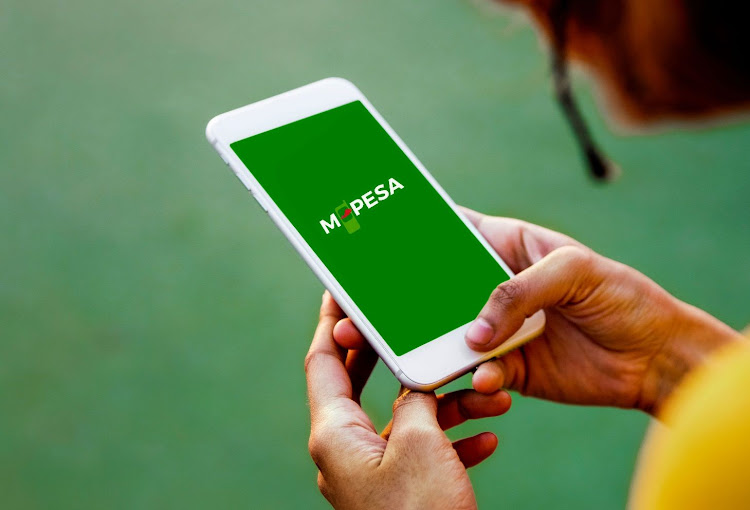Wealthy Kenyans using Hustler Fund more than those at the bottom - Report

By Lucy Mumbi |
Despite the widespread uptake of the Hustler Fund, loan repayment rates have not kept pace, prompting the government to revise the terms of repayment.
New data has revealed that a significant proportion of those accessing President William Ruto’s Hustler Fund are from middle and higher-income households, a surprising trend that contrasts with the fund’s goal of supporting low-income earners.
According to a report by the Central Bank of Kenya (CBK), 35.8 per cent of Hustler Fund users belong to the highest wealth quintile, while just 18.7 per cent come from the lowest wealth quintile.
Keep reading
The shift highlights the fund's increasing appeal to wealthier individuals, despite its design to provide accessible loans to low-income groups.
“Informal group usage remains relatively stable across wealth quintiles, with slight decreases as wealth increases. The Hustler Fund is particularly significant among middle and higher-income groups, reflecting its appeal as an accessible credit option,” reads the report.
The data, included in the 2024 Finance Report by the Kenya National Bureau of Statistics (KNBS), CBK, and Financial Sector Deepening Trust (FSD Kenya), reveals that the fund is especially popular among middle and higher-income groups due to its appeal as an accessible credit option.
It notes that it has reached 28.9 per cent of the adult population, equating to about 8.1 million users.
“The usage of hustler fund loan services was at 28.9 per cent of the population in 2024. This represents 8.1 million of the adult population,” reads the report.
Urban dwellers
The report notes that the facility is most popular among urban dwellers, with 35.4 per cent of the urban population benefiting, compared to just 24.2 per cent in rural areas.
The demographic breakdown also indicates that 31.8 per cent of Hustler Fund users are male, while 26.1 per cent are female. The age group of 26-35 years makes up the largest portion of users, accounting for 39.4 per cent, while just 11.2 per cent of users are aged 55 and above.
The report also highlights the importance of aligning financial services with consumer expectations. It suggests that improving the terms and conditions of the Hustler Fund, particularly for youth and the lowest wealth quintiles, could help accelerate the Bottom-Up Economic Transformation Agenda.
It further notes that poor customer service, especially in microfinance institutions and insurance sectors, has discouraged usage, while mobile bank accounts have recorded fewer complaints.
Mobile money usage
The survey found that mobile money usage in Kenya has surged, with daily usage rising from 23.6 per cent in 2021 to 50.2 per cent in 2024.
Mobile money and mobile banking have become key tools for managing transactions and liquidity, particularly for the higher-income, urban population.
“52.6 per cent of Kenyans now use mobile money daily, more than doubling, from 23.6 per cent in 2021, indicating increased digitalisation in payments,” reads the report.
The report also reveals that financial inclusion has seen a marginal increase, with formal financial access reaching 84.8 per cent in 2024, up from 83.7 per cent in 2021. However, challenges remain, particularly for rural youth, with 9.9 per cent of the adult population still excluded from formal financial services. Key barriers to inclusion include a lack of mobile phones (64.1 per cent) and national identification cards (51.5 per cent).
Financial inclusion
While some regions, such as Kiambu, Nairobi, and Mandera, have achieved high levels of financial inclusion, others like Turkana, West Pokot, and Migori continue to face significant barriers.
“Kiambu county leads in terms of formal financial inclusion at 94.0 per cent largely because the population is more informed about financial services, high literacy levels, access to financial services and higher incomes hence affordability. On the other hand, Turkana county leads with the level of exclusion largely due to long outstanding political instability, low education levels and long distances to financial services,” reads the report.
It adds that financial inclusion for persons with disabilities averaged 77.9 per cent which is lower than the national average of 84.8 per cent. According to the report, only seven per cent were found to be financially healthy.
The report also noted that while the uptake of brick-and-mortar bank accounts and saccos has risen, growth in mobile money and digital financial services has moderated. Digital microfinance institutions, including “buy now, pay later” schemes, have benefited from the regulation of digital credit providers.
Despite the widespread uptake of the Hustler Fund, loan repayment rates have not kept pace, prompting the government to revise the terms of repayment.
Last week, President William Ruto announced plans to increase borrowing limits and extend repayment periods for over two million borrowers under the state-run fund.
Reader comments
Follow Us and Stay Connected!
We'd love for you to join our community and stay updated with our latest stories and updates. Follow us on our social media channels and be part of the conversation!
Let's stay connected and keep the dialogue going!















